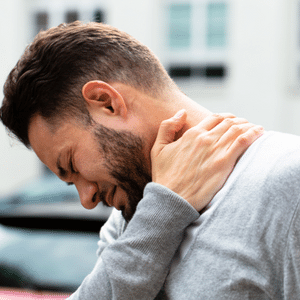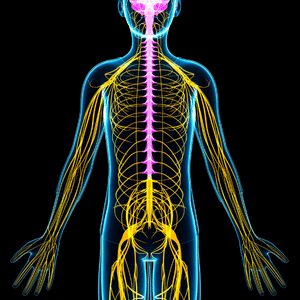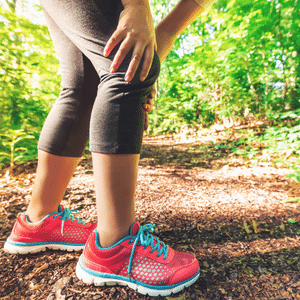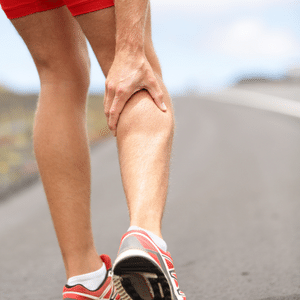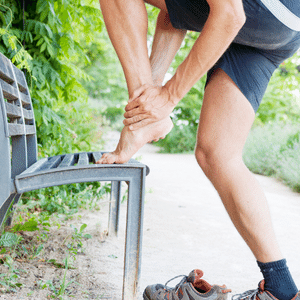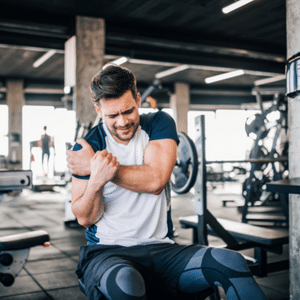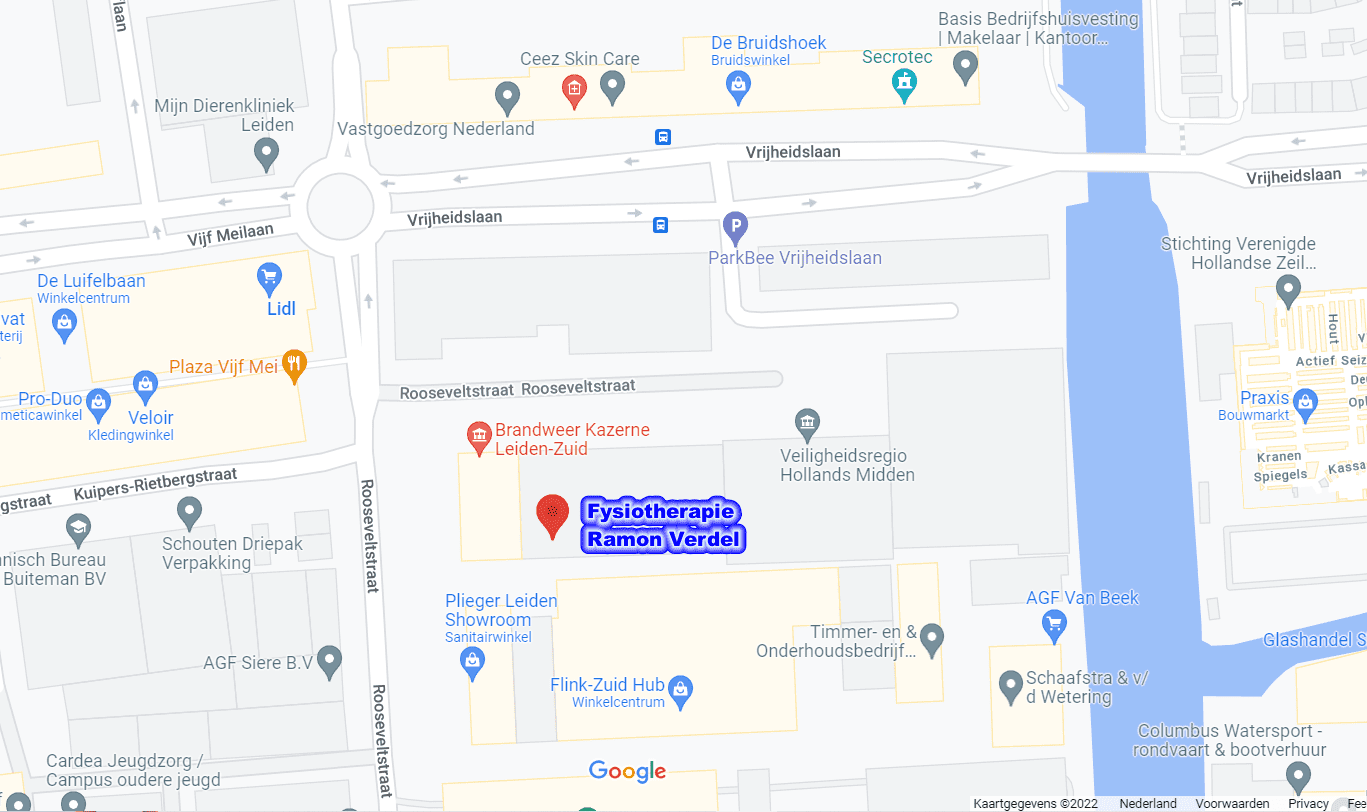COMPLAINTS TO THE HIP AND THIGH
Nowadays we are sitting more and often for a longer period of time. As a result, our hips and legs often stay in the same position for a long time, without much movement and / or muscle tension. Without movement, our muscles and joints become stiff and weak.
Then you walk into the gym with these stiff and weakened hip and thigh muscles to do complex and stressful movements such as a squat or running. Often you also do not do a good warm-up or activation. This can cause a lot of problems and complaints.
ANATOMY
A leg is composed of your femur, your kneecap, your lower leg (tibia and fibula) and foot. The joints in your leg are your hip joint, knee joint, ankle joint and all joints in your foot and toes.
Your glutes have their main function over the hip joint and move your hip.
The upper leg muscles (hamstrings, quadriceps and adductors) have a function both over your hip and over your knee.
An optimal balance between the muscles and joints in your leg provide a strong foundation for your body, better endurance and more strength. If this balance is disturbed, complaints can occur.
HIP OSTEOARTHRITIS
Osteoarthritis in the hip (or coxarthrosis) is a common hip condition. With osteoarthritis, there is a decrease in the articular cartilage. This process happens to every person, but not everyone experiences complaints from it. The complaints in hip osteoarthritis are stiffness in the groin region and starting pains. Although the osteoarthritis itself cannot be treated, the complaints caused by osteoarthritis can indeed be treated.
How? By making the muscles of the hip as strong as possible, and especially the rotational movements. This stimulates the joint capsule to produce joint lubrication so that the hip can move more smoothly.
SNAPPING HIP
A snapping hip is a collective name for a creaking and crackling sound in the hip when moving forward or sideways. The snap happens when a muscle, tendon or ligament rolls over a bone protrusion on the hip. The snapping hip can be located in different places in the hip.
- Often this is the iliopsoas tendon or ligaments of the hip that are too tight. This can be either the large gluteal muscle, or the tendon on the side of your thigh.
- Back: Often this is the hamstring tendon that ‘snaps’ over it.
PIRIFORMIS SYNDROME
OUR TREATMENT
The hip is a complex joint. To find out exactly where your problem comes from, we look at your history, previous injuries, your current sports participation. We also examine your lower back, pelvis, knee, ankle and foot. The cause of your hip problem often lies somewhere in the surrounding joints.
Once we have found the underlying cause, we use a combination of manual therapy, Active Release Techniques and targeted exercises to solve your problem quickly and permanently.
THIGH COMPLAINTS
Complaints to the upper leg can be divided into three categories. Hamstring injuries, quadriceps injuries and adductor injuries. Because we use our legs so much, leg complaints can have major consequences for your daily life. Acute complaints often go away on their own with regulated movement and time. If the symptoms persist for more than 1 week, it is wise to ask for advice from a physiotherapist.
Even with complaints that started gradually and that do not go away on their own, it is wise to make an appointment with a physiotherapist. We investigate the underlying cause of your complaint and help you solve it.
COMPLAINTS TO THE HAMSTRINGS
A hamstring injury is the thigh injury that happens the most. Acute hamstring injuries often happen when starting a sprint or due to a strain. It is also possible that the hamstrings become tighter and more stiff over time.
Hamstrings are located on the back of the thigh. They run from your sitting bone to your shin and fibula and provide knee flexion, hip stretching and rotation of the knee. Especially the knee rotation function of the hamstrings is often overlooked.
The cause of hamstring complaints that arise gradually is often not located in the hamstring itself, but in other parts of your body. Doordat we tegenwoordig zo veel tijd zittend doorbrengen en daarmee continue in een gebogen positie zitten, is bij veel mensen de strekketen niet sterk genoeg. The hamstrings are part of this stretch chain of your body and are connected to both your neck and your toes. If a part of the chain does not work optimally and becomes weaker, the hamstrings will compensate for this and become stiffer and tighter.
If the latter is the case, stretching or foam rolling your hamstring is not going to help you solve your stiff hamstrings. You will have much more benefit by strengthening the hamstrings and making your calves and back extensors stronger. This way you can still get smoother hamstrings without stretching your hamstrings! What the best exercises are for your hamstring depends on the underlying cause. Feel free to ask one of our physiotherapists for advice.
COMPLAINTS TO THE QUADRICEPS
Complaints to the Quadriceps are at the front of the leg.
The quadriceps consists of four muscle heads, one of which runs over the hip and the knee and the other three heads run only over the knee. Together, these four heads allow your hip to bend and your knee to stretch. Together with the hamstrings, the quadriceps form a force torque for bending and stretching. Complaints or stiffness in one of them can cause or maintain problems in the other. It is therefore always important to do a thorough investigation into the underlying mechanisms of an injury.
Acute quadriceps injuries often happen when starting a sprint or are caused by other explosive forces. Also a trauma to the muscle due to a kick or fall can cause injury. These complaints often go away within 6-8 weeks.
Long-term complaints to the quadriceps are, for example, a jumpers knee or a knee tendon injury to the patellar tendon. The knee tendon is continuously under too high a tension and therefore starts to irritate.
Also, problems in the quadriceps can cause complaints to the knee, complaints to the hip, back problems and patellofemoral pain syndrome.
ADDUCTOR COMPLAINTS
Adductor complaints are located on the inside of the upper leg.
There are two adductor muscles that run from your pubic bone towards your hip and pelvis and four adductor muscles that run from your pubic bone towards your thigh and knee. An important function of the adductors is to stabilize the hip. In addition, the adductors help with bending, stretching and twisting of the hip.
Acute adductor complaints often occur with a sprint or rapid lateral movements causing a strain or muscle tear.
Adductor complaints can also occur gradually and get worse over time. This often happens when there is an imbalance in the surrounding muscles in the upper leg. As a result, the adductors compensate too much and become overloaded. This can manifest itself in stiffness and radiance on the entire inside of the upper leg or locally in the groin. The adductors are therefore often very sensitive when you press on them.
Problems in the adductors can also cause complaints elsewhere in your body such as knee complaints, hip complaints and back complaints. It is therefore important to look closely at the underlying mechanism in adductor injuries.
OUR TREATMENT
In order to be able to give an effective treatment, it is important to determine the underlying cause of your complaint. In the case of an acute complaint, the cause is often fairly clear. With long-term complaints, there is often more going on than just the place where the complaints are. We check the entire kinetic chain in order to gain an insight into which muscles and joints can cause the injury or which prevent the injury from healing. This way we can solve the underlying cause quickly and permanently.
If you have any questions about your hip or thigh complaint, please feel free to contact one of our therapists. Often we can already give you useful tips that reduce your complaints immediately.


